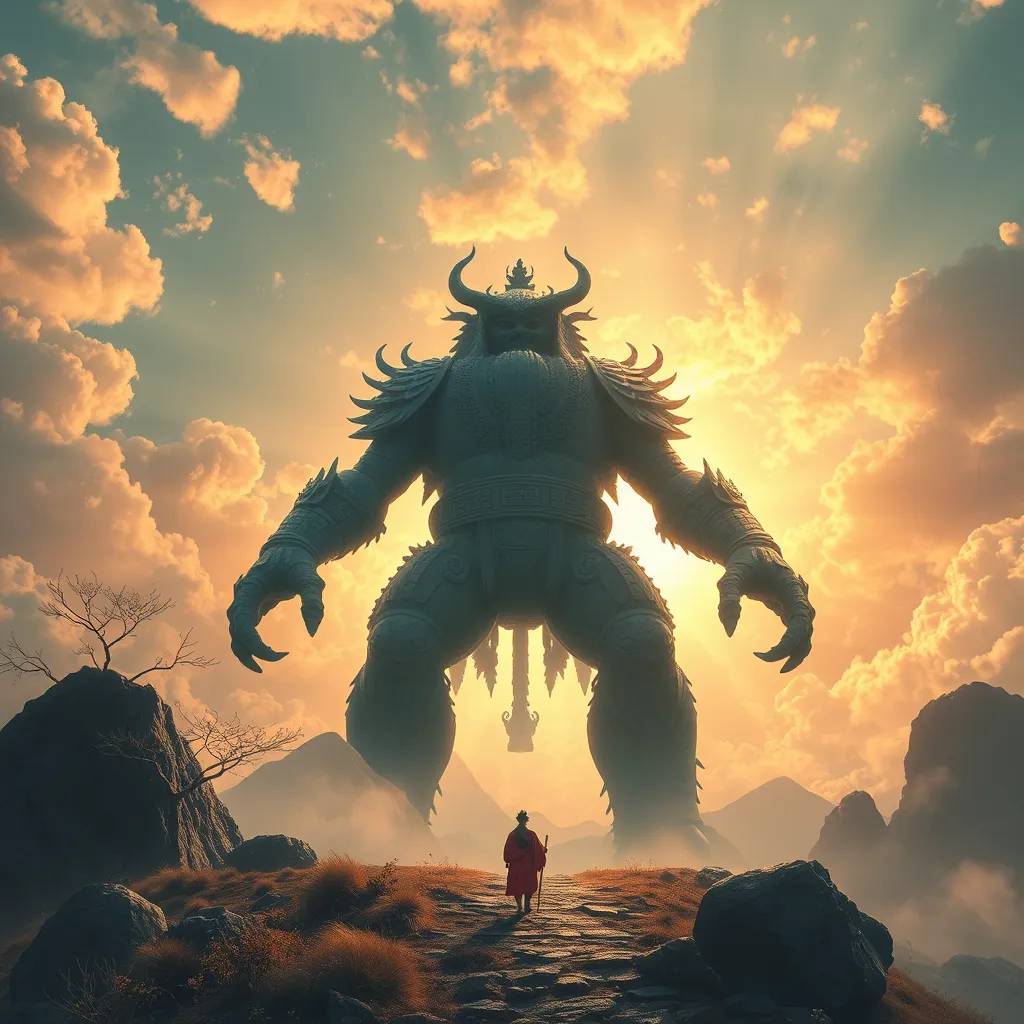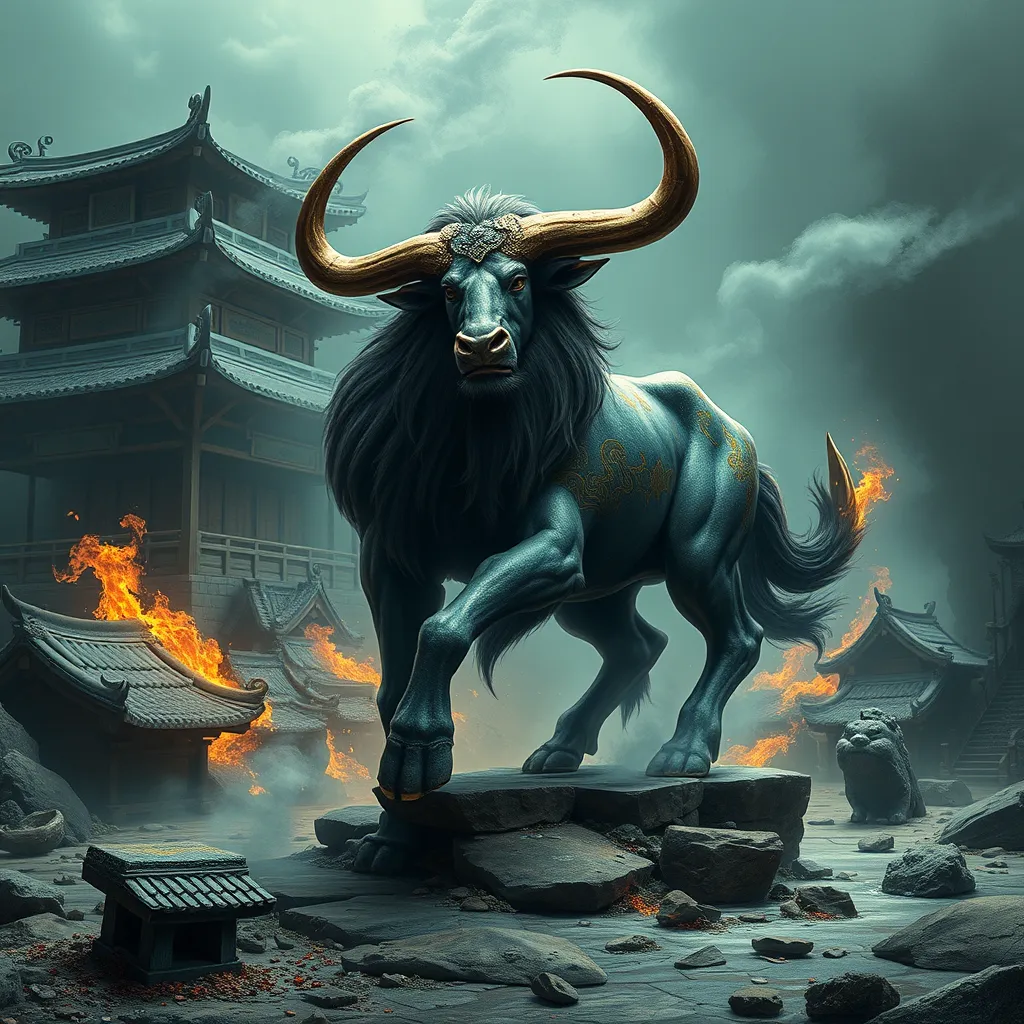The Giant of the Sky: A Korean Legend of the Najeon
I. Introduction
The Najeon legend is a captivating tale deeply rooted in Korean folklore, embodying rich cultural values and historical narratives. This legend revolves around a giant who is said to have influenced the natural world and human existence in significant ways. The significance of this legend in Korean culture is profound, as it reflects the spiritual beliefs and traditions that have shaped the Korean identity over centuries. The purpose of this article is to delve into the origins, themes, and cultural impact of the Najeon legend, highlighting its importance in the tapestry of Korean storytelling.
II. Origins of the Najeon Legend
The origins of the Najeon legend can be traced back to ancient Korea, where oral traditions played a critical role in preserving stories and cultural heritage. Historically, the legend reflects the relationship between the people and their environment, illustrating how natural phenomena were often attributed to divine or mythical beings.
- Historical Context: The legend is believed to have emerged during the Three Kingdoms period, a time when mythology intertwined with the daily lives of the Korean people.
- Oral Tradition: Passed down through generations, the Najeon legend showcases the power of storytelling in maintaining cultural identity.
- Ancient Beliefs: The giant’s narrative connects to ancient Korean beliefs surrounding nature, gods, and the universe, emphasizing a harmonious coexistence.
III. The Character of the Giant
The giant in the Najeon legend is a formidable figure, characterized by both physical prowess and a deep connection to the cosmos. His description is often grandiose, symbolizing strength and wisdom.
- Physical Characteristics: The giant is depicted as towering over mountains, with features that reflect the elements—his hair as winds, his eyes as stars, and his voice as thunder.
- Symbolism: He symbolizes the duality of nature, representing both creation and destruction, and embodies the spirit of resilience in the face of adversity.
- Relationship with Nature: The giant is portrayed as a guardian of the earth, maintaining balance and order in the natural world, which is a recurring theme in many Korean legends.
IV. Key Events in the Legend
Central to the Najeon legend are several key events that outline the giant’s journey and the challenges he faces.
- The Rise of the Giant: The legend begins with the giant’s emergence from the celestial realms, where he is imbued with power and wisdom. His initial actions involve nurturing the land and guiding the people.
- Major Challenges: The giant faces numerous trials, including battles against malevolent spirits and natural disasters that threaten the harmony he strives to maintain.
- Resolution: Ultimately, the giant’s story concludes with his triumph over darkness, leading to a renewed balance in nature and the restoration of peace among the people.
V. Themes and Motifs
The Najeon legend is rich with themes and motifs that resonate deeply with human experiences and cultural values.
- Bravery: The giant’s courage in facing formidable foes symbolizes the strength found in unity and perseverance.
- Sacrifice: The legend emphasizes the importance of selflessness, as the giant often puts the needs of others before his own.
- Harmony with Nature: This motif underscores the belief that humanity must live in balance with the earth and respect its power.
Furthermore, parallels can be drawn between the Najeon legend and other cultural myths, highlighting universal themes of heroism and the eternal struggle between good and evil.
VI. Cultural Impact and Legacy
The influence of the Najeon legend extends beyond folklore, permeating various aspects of Korean art, literature, and modern identity.
- Art and Literature: The giant has inspired countless works of art, from traditional paintings to contemporary literature, reflecting its enduring relevance in Korean culture.
- Modern Identity: The legend plays a significant role in shaping the narrative of what it means to be Korean, embodying values of strength, resilience, and a deep connection to nature.
- Contemporary Media: Adaptations of the legend can be found in films, television series, and even video games, showcasing the giant’s enduring legacy in popular culture.
VII. Lessons from the Najeon Legend
The Najeon legend offers valuable lessons that remain relevant in today’s world.
- Moral Takeaways: Themes of bravery and sacrifice encourage individuals to confront their fears and prioritize the well-being of their communities.
- Relevance Today: The legend reminds us of the importance of environmental stewardship and the need for harmony with nature in an age of rapid industrialization.
- Cultural Preservation: Emphasizing the power of storytelling, the legend encourages the preservation of cultural narratives that define our identities.
VIII. Conclusion
In summary, the Najeon legend is a significant cultural artifact that reflects the values and beliefs of Korean society. The giant’s journey encapsulates themes of bravery, sacrifice, and environmental harmony, leaving an indelible mark on Korean folklore. As we explore the richness of this tale, we are reminded of its enduring legacy and the importance of preserving such narratives for future generations. Readers are invited to delve deeper into the world of Korean folklore, discovering the myriad stories that continue to inspire and resonate today.



